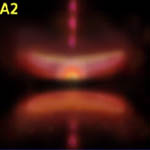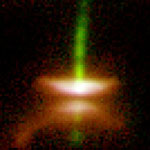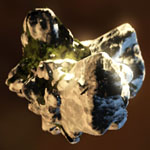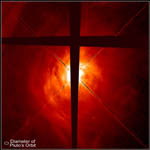| Theory predicts that as a molecular cloud collapses toward a single point, pre-existing motion within the cloud will cause the collapsing mass to begin rotating. As it rotates, what would otherwise be spherical flattens for form a rotating disk with a central bulge. Ultimately most of the material will accumulate in the center to form the future star, but a small fraction of the gas and dust will form a disk in orbit around the protostar. The images on this set of pages provide visual evidence that this process does occur and does forms planets. Moreover, the fact that planets have formed outside our own Solar System has been proven: over 120 other planets have thus far been detected!
The disk will start out hot and be hottest near the new star and progressively cooler moving away from the star. As time passes, the disk will cool and molecules and new solids will form. Mineral solids (silicates and metals) will tend to form future rocky planets. Ice, various gases, and other compounds will dominate the outer giant planets. After the solids form, they will begin to stick together to form larger particles (i.e., they will accrete). This process will continue until planets are formed.
|




